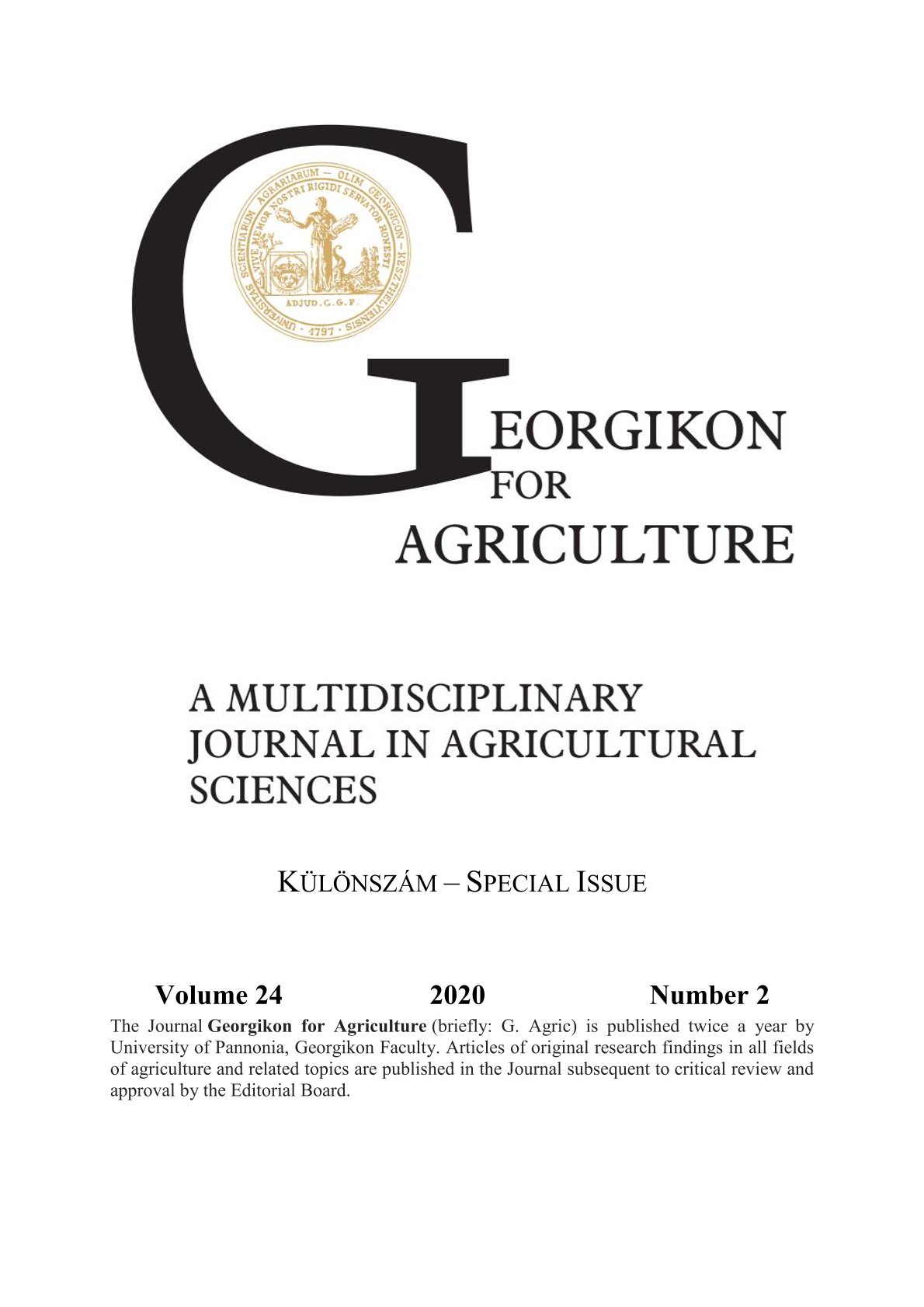Fűz és nyár avar lebontásának vizsgálata a Balaton területén
Kulcsszavak:
fűz, nyár, avarlebontás, Balaton, Kis-BalatonAbsztrakt
A fűz-nyár ligeterdők hazánkban szinte minden felszíni víztest közvetlen környezetében megtalálhatók, de leginkább folyóvizeink árterületeinek jellegzetes növénytársulásaként. Az utóbbi évtizedekben az élőhelytípus jónéhány károsodást szenvedett főként a különböző emberi beavatkozások következtében, ugyanis ezeken a területeken legelőket, szántókat illetve gyümölcsösöket hoztak létre. Az őszi időszakban a lombhullatás során nagy mennyiségű avar kerül felszíni vizeinkbe, amik feldúsítják annak szervesanyag-tartalmát. Két fa faj, a fehér fűz (Salix alba) és a fekete nyár (Populus nigra) lehullott avarmintájának lebomlásának ütemét vizsgáltuk a vegetációs időszakban a Balaton területén avarzsákos módszerrel. A vizsgálat jól mutatja, hogy a hőmérsékletváltozás miként gyorsítja a lebontás mértékét és, hogy makrogerinctelenek nagyban befolyásolják a bomlási folyamatok mérsékletét.
Hivatkozások
Allan, J. D., Castillo, M. 2007. Stream Ecology: Structure and Function of Running Waters Second Edition. Dordrecht: Springer; 135–46.
Bärlocher, F. 2005. Leaf mass loss estimated by litter bag technique. In: Graça, M. A. S., Bärlocher, F. és Gessner, M. O. (szerk.): Methods to study litter decomposition: a practical guide. Springer, Netherlands.
Benfield, E. F. 1997. Comparison of litterfall input to streams. In: Webster, J. R. és Meyer, J. L. (szerk.): Stream Organic Matter Budgets. Journal of the North American Benthological Society. 16. 3–161. https://doi.org/10.2307/1468223
Bíró K., 1981. Az árvaszúnyoglárvák (Chironomidae) kishatározója, 81/1383 VÍZDOK nyomda, Budapest
Dunck, B., Lima-Fernandes, E., Cassio, F., Cunha, A., Rodigues, L., Pascoal, C. 2015. Responses of primamry production, leaf litter decomposition and associated communities to stream eutrophication. Environmental Pollution. 202. 32–40. https://doi.org/10.1016/j.envpol.2015.03.014
Graça, M. A. S. 2001. The role of invertebrates on leaf litter decomposition in streams - a review. International Review of Hydrobiology. 86. 383–393. https://doi.org/10.1002/1522-2632(200107)86:4/5<383::AID-IROH383>3.0.CO;2-D
Garcia, L., Richardson J., Pardo, I. 2012. Leaf quality influences invertebrate colonization and drift an temperate forest stream. Canadian Journal of Fisheries and Aquatic Science. 69. 1663–1673. https://doi.org/10.1139/f2012-090
Hill, B. H., Webster, J. R. 1983. Aquatic macrophyte contribution to the New River organic matter budget. In: Fontaine, T. D. III., Bartell, S. M (szerk.): Dynamics of Lotic Ecosystems. Ann Arbor Press, Ann Arbor
Ingold, C. T. 1975. An illustraited guide to aquatic and water-bome hyphomycetes (fungi imperfecti) with notes on their biology. Freshwater Biology Association Publication 30, pp. 96.
Koók, V., Simon, B., Kucserka, T. 2018. Fűz és nyár avar lebontásának vizsgálata a Balaton és a Kis-Balaton területén. Georgikon for Agriculture. 23. 49–50.
Martins, R. T., Melo, A. S., Goncalves. jr J. F., Hamada N. 2015. Leaf-litter breakdown in urban streams of central amazonia: direct and indirect effects of physical, chemical, and biological factors. Freshwater Science. 34. 716–726. https://doi.org/10.1086/681086
Tarrant, E., Nine, A., Powers, L., Heth R. K. 2009. Decomposition Rate and Comminity Structure pf Leaf-packs in an Urban and Rural Stream is Southwestern Missouri. Transactions of the Missouri Academy of Science. 43. 39–45. https://doi.org/10.30956/0544-540X-43.2009.39
Webster, J., Benfield, E. 1986. Vascular plant breakdown in freshwater ecosystems. Annual Review of Ecological Systems. 17. 567−594. https://doi.org/10.1146/annurev.es.17.110186.003031
Letöltések
Megjelent
Folyóirat szám
Rovat
License
Copyright (c) 2020 Szalai Ákos, Simon Brigitta, Kucserka Tamás

This work is licensed under a Creative Commons Attribution-NonCommercial-NoDerivatives 4.0 International License.
The articel is under the Creative Commons 4.0 standard licenc: CC-BY-NC-ND-4.0. Under the following terms: You must give appropriate credit, provide a link to the license, and indicate if changes were made. You may do so in any reasonable manner, but not in any way that suggests the licensor endorses you or your use. You may not use the material for commercial purposes. If you remix, transform, or build upon the material, you may not distribute the modified material. You may not apply legal terms or technological measures that legally restrict others from doing anything the license permits.




 Georgikon for Agriculture
Georgikon for Agriculture